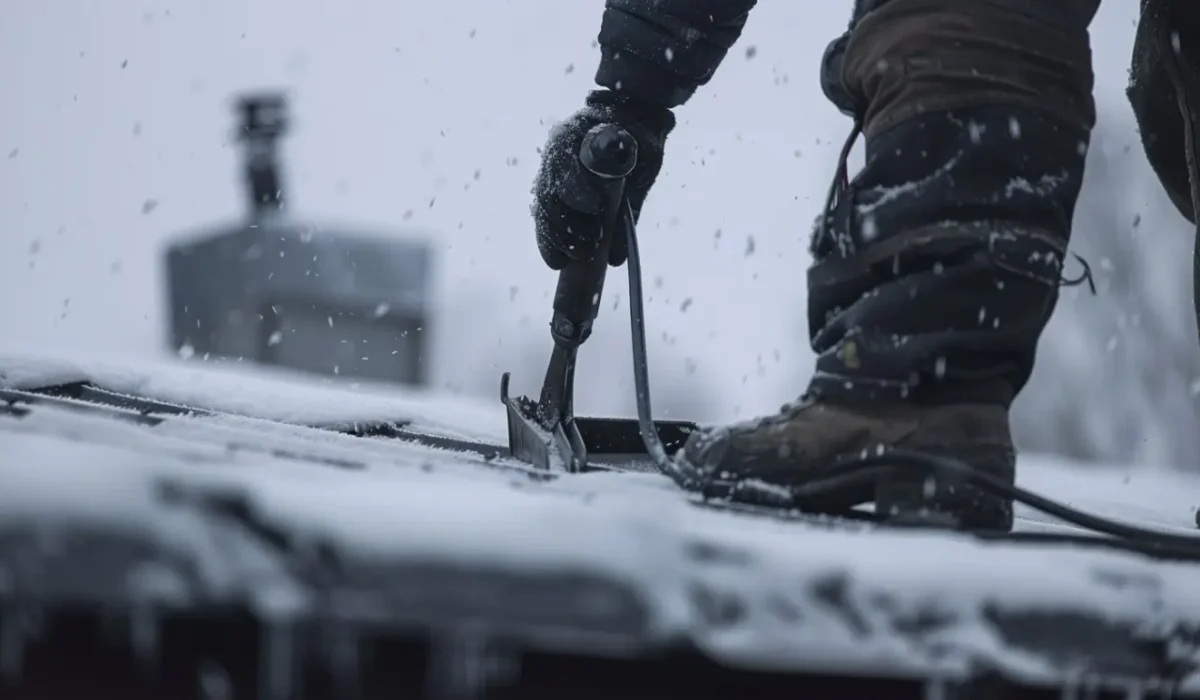As the seasons shift in Grapevine, TX, your roof quietly takes on new responsibilities. From heavy fall winds to unexpected winter freezes, the colder months present unique challenges that can test the limits of your roofing system. That’s why a seasonal roof inspection isn’t just recommended—it’s essential for protecting your home, preventing costly repairs, and ensuring long-term performance.
Use this fall and winter inspection guide to evaluate your roof like a pro and keep your home protected when the weather turns unpredictable.
Why Fall and Winter Inspections Are Critical in Texas
While Grapevine may not get heavy snow, winter weather here still brings sudden cold snaps, freezing rain, and blustery winds—all of which can accelerate roof wear and tear. Combined with leaf buildup from fall, these conditions can stress even a well-maintained roof.
By inspecting and preparing your roof in the fall, you reduce the risk of:
- Leaks during winter rains
- Ice dams forming at roof edges
- Debris buildup that traps moisture
- Hidden storm damage worsening over time
The earlier you catch these issues, the easier—and cheaper—they are to fix.
Start With a Visual Roof Inspection
Begin your inspection from the ground. Walk the perimeter of your home and look up at the roof for obvious signs of trouble, including:
- Missing, curling, or cracked shingles
- Dark streaks or stains, which could indicate mold or algae
- Sagging areas that may point to weakened decking
- Debris like leaves or branches collecting in valleys
Use binoculars if needed, but don’t climb on the roof unless you’re trained and it’s safe to do so. Most damage can be spotted from a distance—and anything questionable should be evaluated by a professional.
Clean Out Gutters and Downspouts
Fall in Texas brings plenty of leaf litter, especially around rooflines. If your gutters are clogged, water won’t drain properly. Instead, it can back up beneath shingles or overflow onto your siding and foundation.
Take time to:
- Clear leaves and debris from gutters
- Ensure downspouts direct water at least five feet from the foundation
- Inspect for cracks, gaps, or sagging sections
- Install gutter guards if leaves are a recurring problem
A clear drainage system is one of the most important protections your roof and home can have during wet seasons.
Inspect Attic and Ceiling for Hidden Damage
Sometimes roof problems reveal themselves from the inside. Head into your attic and look for:
- Water stains or moisture on insulation
- Visible daylight through the roof boards
- Musty odors that indicate mold or mildew
- Warped or sagging wood structures
During colder months, warm interior air rises into the attic. Without proper ventilation, this creates condensation that can lead to mold and premature material failure. Make sure soffit and ridge vents are clear and working properly.
Check Flashing and Roof Penetrations
Flashing seals the vulnerable areas around chimneys, skylights, roof valleys, and vents. Damaged or loose flashing is one of the top causes of roof leaks in winter, especially during periods of freeze-thaw cycles.
Common signs of flashing trouble include:
- Rust spots or corrosion
- Gaps between the flashing and roof surface
- Loose or missing sealant
- Water stains near roof protrusions
These issues require professional resealing or replacement to ensure your roof is watertight heading into colder months.
Evaluate the Age and Condition of Shingles
If your roof is more than 15 years old or has weathered multiple hailstorms, now is the time to take a closer look. Aging shingles may appear:
- Discolored or streaked
- Brittle or cracking
- Missing granules (check gutters for residue)
While isolated damage can be repaired, widespread wear may signal that a full replacement is on the horizon. A certified roofer can help you weigh the pros and cons based on your roof’s overall condition.
Trust the Experts for a Comprehensive Roof Inspection
While DIY checks are helpful, there’s no substitute for a professional inspection. In Grapevine, TX, homeowners count on KangaRoof for expert evaluations, honest recommendations, and high-quality repairs. KangaRoof is an OC Preferred and Emerald Premium Contractor, known for detail-oriented service and local expertise.
Their fall and winter inspection service includes:
- Full surface assessment
- Underlayment evaluation
- Flashing and sealant checks
- Ventilation analysis
- Documentation for warranty or insurance claims
Scheduling an inspection now can save you from unexpected issues during winter storms and avoid higher repair costs in the spring.
Proactive Repairs = Winter Peace of Mind
If your inspection uncovers any signs of damage, don’t wait to schedule repairs. Small issues like lifted shingles, loose nails, or cracked seals can quickly worsen under the pressure of storms, wind, and freezing rain.
By fixing problems now, you:
- Prevent interior water damage
- Preserve the life of your roofing system
- Avoid emergency calls during severe weather
- Maintain your warranty eligibility
Final Thoughts: Seasonal Inspections Are a Smart Investment
Fall and winter roof inspections aren’t just seasonal chores—they’re an essential part of homeownership in Grapevine. Taking the time to assess your roof, clear debris, and schedule a professional evaluation sets you up for success in the coming months.
With KangaRoof as your local partner, you’ll receive the expert care, honest advice, and storm-ready protection your home needs to thrive—no matter what the Texas weather brings.
Read also our blog: Winterization Tips to Prepare Your Roof for Cold Weather
